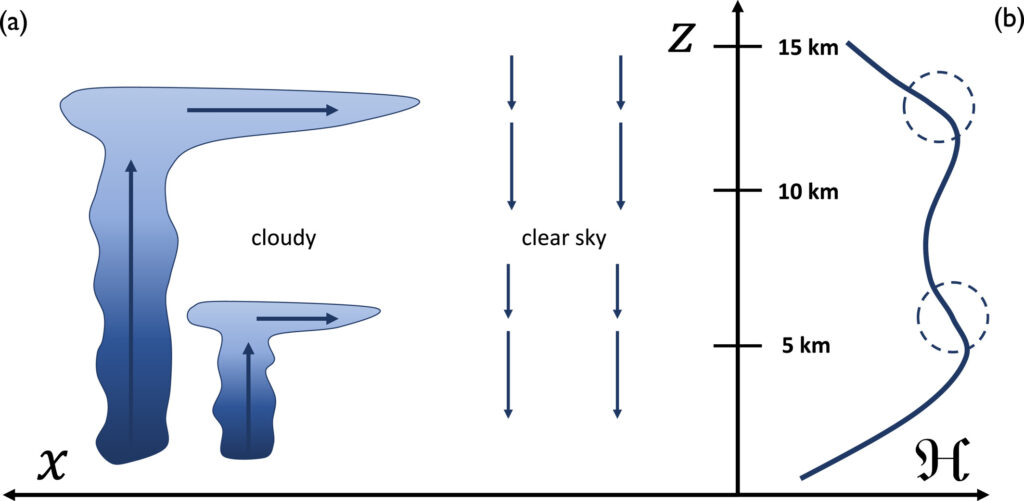Editors’ Highlights are summaries of recent papers by AGU’s journal editors.
Source: AGU Advances
Most observers of tropical convection will be familiar with congestus clouds, so named because their piling up is made visible as they terminate their development in the mid-troposphere. A variety of ideas have been advanced to explain this observation.
Spaulding-Astudillo and Mitchell [2025] present a new and compelling idea that ties congestus prevalence to the spectroscopy of the water molecule. They show that the small reduction in absorption features at the height of the cloud tops causes a reduction in the radiative cooling at that height. The reduction in clear sky cooling is most easily balanced by mass being drawn out of the clouds, leading to preferred detrainment at these altitudes. They further show that the vertical distribution of relative humidity colludes with the spectroscopic properties of water vapor to further favor this behavior. Their work adds a new item to the long list of observations that can be explained by a deeper understanding of water vapor’s appetite for infrared radiation.

Citation: Spaulding-Astudillo, F. E., & Mitchell, J. L. (2025). Clear-sky convergence, water vapor spectroscopy, and the origin of tropical congestus clouds. AGU Advances, 6, e2024AV001300. https://doi.org/10.1029/2024AV001300
—Bjorn Stevens, Editor, AGU Advances

